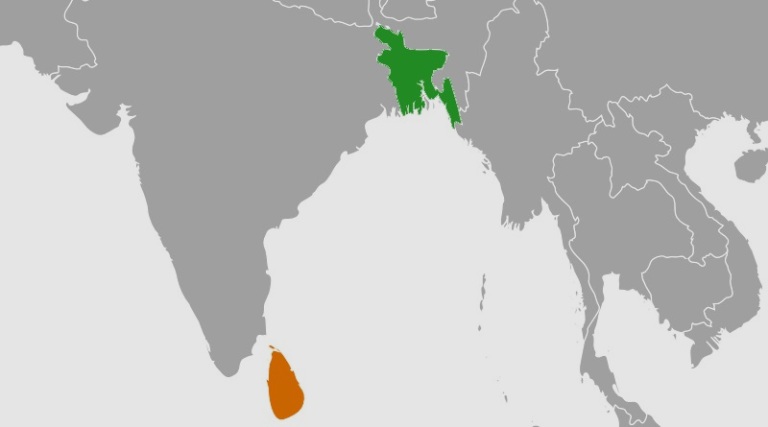
A newly opened shopping mall in Beijing, pictured on Apr. 16: China is still a long way behind the U.S. on consumer growth potential. REUTERS
Rising incomes in Asia will probably be one of the key investment stories of the 2020s. This is materially underappreciated by the world's growth investors, many of whom are structurally underweight in Asian equities, likely to the detriment of their own long-term returns.
The Asian middle class will grow by about 1.2 billion people by 2030. China alone is already responsible for 35% of the entire world's global demand for luxury goods.
While there are many Chinese billionaires, the average gross domestic product per capita is still only around $10,000. While this represents an impressive rate of growth from just $1,000 in 2000, China is still a long way behind the U.S. on consumer growth potential.
Indeed, China's GDP and incomes should be about 50% larger by 2030. That is an expected rise in incomes to $15,000 per person. Multiply that by China's 1.4 billion people -- that is a real increase in consumption of about $7 trillion, larger than the current size of the German and U.K. economies combined.
There are enormous growth opportunities for companies providing a wide range of goods and services -- from premium food brands to insurance, from health care to online tutoring. Yet most global investors may be underestimating and overlooking the companies capitalizing on Asia's booming consumption.
The single biggest corporate change in the last quarter-century in Asia has been the emergence of a new class of dynamic, homegrown companies delivering top-line growth and punchy returns on equity.
These innovative, high-quality companies are rapidly monetizing the revenue opportunities Asian consumers are creating. Some are either already world-leading in their industries or have exceptional profit potential because they are aligned to super trends that the pandemic accelerated, like e-commerce, enterprise software or pharmaceutical research.
For example, Asian consumption has become more digitized and higher quality. Online shopping and virtual entertainment have driven the demand for the hardware which powers handheld devices, which in turn enables the cloud, making possible the use of large quantities of data. Asian R&D has transformed in the past generation, in some cases now well ahead of the West. Global growth investors preoccupied with overpriced U.S. tech giants are missing a trick.
Meanwhile, the expanding ranks of Asia's middle class are increasingly focused on premiumization -- upgrading goods and services. Consumers are buying everything from bigger and better houses with smart appliances, to higher quality condiments like premium soy sauce, to electric vehicles, to travel products. Asia's corporate leaders and startups alike are moving quickly to cash in on these consumers.
At the same time, demographic changes are sweeping through the region as parts of Asia are graying quickly, bringing a greater focus on health care and pharmaceuticals, retirement planning, insurance and wealth management products.
The pandemic massively accelerated expenditure on medical care, which will power earnings growth for innovative Asian health care companies catering to an increasingly affluent client base. And as Asians continue to accumulate wealth, the demand for a wide variety of financial services like insurance is on the rise.
Inclusive finance is blossoming in India, which is on a different demographic track to China and many of the more mature Asian economies. With more than 480 million Indians under the age of twenty, greater than the entire 370 million population of North America, the working-age population is set to grow strongly.
Starting from a much lower base of only around $2,000 GDP per capita, India's real GDP should grow at 6.9% per year on average over the next decade.
That should see Indian real incomes nearly double over the next decade, propelling several hundred million Indians into the middle class within ten years, and enable more households to afford higher quality food products and financial services.
There are exciting investment opportunities in India's private sector banks, many of which are at the forefront of digital banking. Coupled with increased smartphone and data penetration, digital payments in India have grown 10 times over the past four years, helping private sector banks to significantly grow market share in the mobile banking space and outpacing their public sector rivals.
An array of Asian companies offer growth investors a ticket to tapping into evergreen structural megatrends, but other more cyclical companies across the region will take off in the recovery coming out of the pandemic. These include not only banks mentioned but technology hardware stocks in Taiwan and China A-shares, cement stocks in India and garment stocks in Taiwan.
These companies, which offer long-term growth potential, are currently available at a more reasonable price in Asia than elsewhere in the world.
MSCI Asia ex-Japan stock index trades on a forward price-to-earnings ratio of about 17 times, similar to Europe, and significantly cheaper than the 22-time P/E ratio for the U.S. --- and this is despite a higher growth rate in many Asian economies.
Recognizing Asia as the world's superior investment hunting ground will be the next big step-change in global growth investing. As an exciting cohort of Asian companies capitalizes on powerfully rising incomes and consumption across the region, investors looking to get in on the returns would do well to take notice.
For discriminating investors who realize Asia will lead in the decade ahead, and for the rest of the century -- and for those who are willing to be selective -- there are exciting opportunities across the region.
Joanna Kwok is co-portfolio manager of JPMorgan Asia Growth Fund.












0 Comments